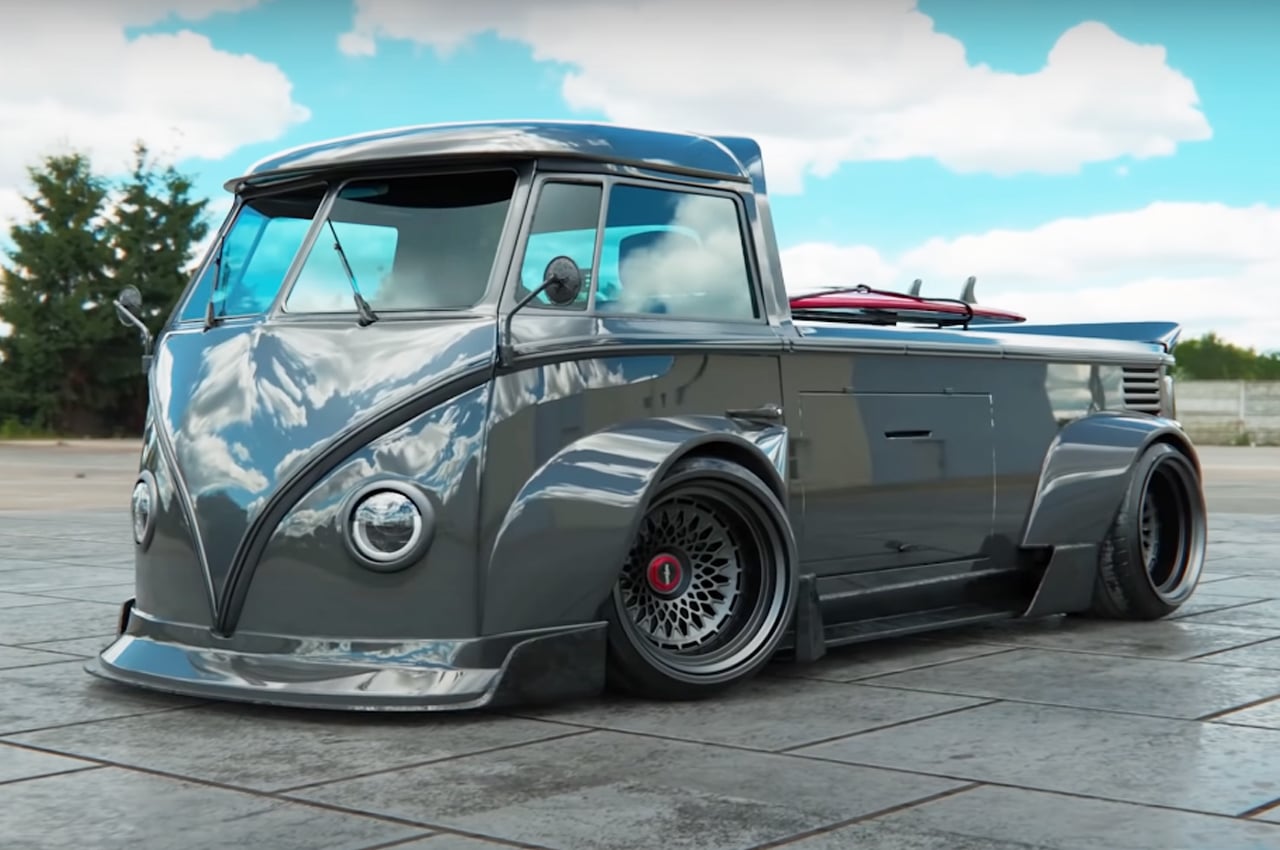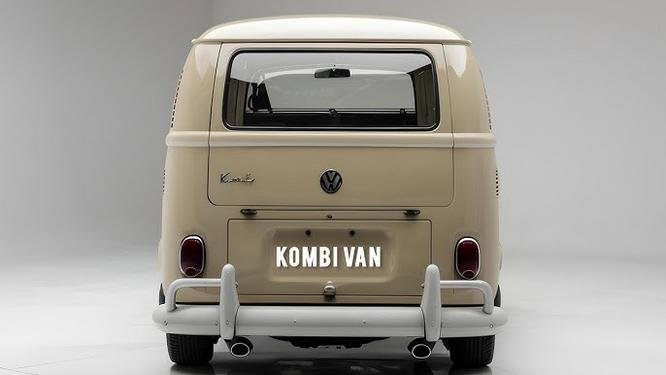Transformation Of The VW Kombi Into The Performance-Oriented ID. Buzz GTX

The 86 kWh battery tucked beneath the floor translates to a WLTP range touching 450 km—a figure that renders multi-day getaways guilt-free and cleaves daily commuting pains in half [3]. Rapid DC-charging further slashes downtime, meaning a 10-minute pause can restore enough juice for another 200 km of twisty-road therapy. Despite its performance focus, Volkswagen hasn’t forsaken the Kombi’s original raison d’être: a cavernous cabin, flexible seating for five or seven, and that retro charm reimagined with ambient lighting, sustainable upholstery, and a state-of-the-art infotainment suite that rivals any premium crossover.
It’s not just about straight-line speed. The GTX badge denotes more than extra ponies—it’s VW’s promise of genuine all-wheel-drive confidence. That means four-wheel torque distribution, adaptive suspension, and an electronic diff that balances the power so seamlessly you’d never suspect you’re piloting what visually appears to be a nostalgic people-carrier. I never expected to grin ear-to-ear in a minivan, yet here I am, cherishing every corner attack, every surge of instant torque, every swipe of the touchscreen interface that grants command over six customizable drive modes. On a related note, if you’re curious about how modern electric SUVs blend utility with performance, our Polestar 3 family-friendly electric SUV review offers a useful point of comparison—showing just how far EV tech has evolved.
Dual Electric Motor Power And Performance
The heart of the GTX experience is its twin-motor layout: one on each axle, collaborating to deliver 250 kW (340 PS) and that punchy 560 Nm of torque. In practical terms, you peel off from traffic lights like your foot’s been yanked forward by an electric tractor beam. And yet, the ride remains composed—no violent jerks, no uncanny lurches—just fluent acceleration that punches through 0–100 km/h in 6.1 seconds, reminding you that this bus can outrun many sport-utility vehicles [3].

Plugging this into a quick specs table sharpens the picture:
| Metric | Value |
|---|---|
| Combined Power | 250 kW (340 PS) |
| Torque | 560 Nm |
| 0–100 km/h | 6.1 s |
| Top Speed | 160 km/h (limited) |
Regular EV test drivers will note that peak power doesn’t always translate to thrilling on-road behavior—torque delivery, chassis compliance, and software finesse matter equally. Thankfully, VW nails the balance. Launch mode squeezes every drop of traction, while Sport sharpens throttle mapping without sacrificing smoothness. Yet even in Eco, the GTX never feels sluggish; it simply prioritizes range and regenerative braking. For a more visceral account of how it feels when pushed hard, check out our POV test drive of its performance and design, where we explore real-world traction and cornering.
Advanced Handling Capabilities
You wouldn’t expect precision-rack steering in a modern people-mover, but here it is, as crisp as you’d find on a dedicated sports sedan. The ID. Buzz GTX employs torque vectoring to apportion drive between wheels in milliseconds—hammer the throttle mid-corner, and it tugs you wide, planting each tyre like a laser-guided missile [2].

Underneath, adaptive dampers adjust on the fly. Floored in Comfort, the ride feels floating, almost cloud-like. Yet flip the drive mode to Sport and that same suspension mid-stroke firms up, clipping body roll, reducing pitch, and letting you hustle through slaloms with newfound confidence. Oddly enough, it actually makes you nostalgic for the old Kombi’s simplicity while delivering a thrill factor that it never could.
Six selectable drive profiles—Eco, Comfort, Normal, Sport, Individual and Off-road—mean you tailor the steering weight, throttle curve, and suspension firmness to your mood or the road surface. Gravel tracks? Off-road mode calibrates torque split and damping to keep you from sliding sideways. Tarmac blasts? Sport hones everything for razor-sharp responses. And if you crave nocturnal canyon runs, remember how we extolled the poise of the Tesla Model Y in our nighttime POV driving review. The GTX isn’t far behind when darkness falls.
Performance Meets Sustainability
The narrative that electric performance always comes at the expense of environmental stewardship is shattered by the ID. Buzz GTX. Beneath its playful retro exterior beats an 86 kWh (usable ~79 kWh) battery that balances punchy acceleration with sensible energy use. In real-world tests, consumption averages around 19.5 kWh/100 km—comparable to leaner crossovers—thanks to regenerative braking, intelligent thermal management, and aerodynamic tweaks hidden beneath the bodywork [5].
Let’s break down the sustainability metrics in a handy table:
| Specification | Value |
|---|---|
| Battery Capacity (net) | 79 kWh |
| WLTP Range | 350–450 km |
| Avg. Consumption | 19.5 kWh/100 km |
| Fast-Charge Rate | Up to 170 kW DC |
Sustainable materials pepper the cabin: vegan leather, recycled textiles and dashboards crafted from reclaimed woods. These aren’t mere marketing buzzwords. Even the packaging on the charging cable is fully recyclable. And for those curious about how the GTX stacks up in pure range terms, the Polestar 3’s 600 km WLTP figure might look tempting, but remember that the Buzz’s fun factor and flexible interior often outweigh a few extra dozen kilometres of theoretical reach.
“With the GTX, we’re showing that sustainability and excitement can go hand in hand,” notes VW’s head of e-mobility, capturing the ethos that every kilometre in this modern Kombi legend leaves a softer footprint than its fossil-fueled ancestors [2]. It’s a philosophy I find genuinely uplifting—performance without compromise, heritage without compromise, community vibes with an eco-twist.
ID. Buzz GTX: Performance, Practicality, and Electric Innovation
The ID. Buzz GTX proves that a van can be more than cargo and passengers. It’s an EV that doesn’t demand you sacrifice thrills for shape. Remarkable acceleration, agile handling, a range that takes you into a second day of driving—yet it still feels like a Volkswagen Kombi. It bridges decades of automotive culture, blending the laid-back ethos of the past with a zero-emissions future.
Inside, flexible seating absorbs the demands of families, weekend warriors, or digital nomads. Need space for surfboards, camping gear, and gig equipment? The long-wheelbase layout swallows it all. But then you hit Sport mode and the entire rig transforms into a playful corner carver. It’s incongruous and delightful. And if you ever find yourself needing a quiet sanctuary between blasts, the premium sound insulation and smooth NVH dampening will cocoon you in near-silence.
Clever driver aids—lane-keep assist, predictive cruise control, 360° cameras and an augmented-reality head-up display—feel like safety nets rather than gimmicks. On long hauls, the IntelliSense climate control remembers your favorite settings. Plus, OTA updates ensure the GTX only gets smarter; you might flick through firmware notes and spot new drive-mode calibrations or UI tweaks that keep you engaged month after month.
At a starting price north of £67,000 in the UK and around €73,000 in Germany, it sits at the premium end of the market. Yet I’d argue the emotional currency it delivers—nostalgia, community spirit, the sheer grin factor—makes every euro feel well spent. The ID. Buzz GTX doesn’t just resurrect a legend, it redefines it.

